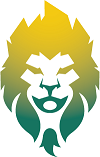Neck stretching
TECHNICAL SHEET ON NECK STRETCHING:
Standing or sitting on a chair (perhaps more practical), the exercise is quite simple. Stand up and make sure you are comfortable, well rooted on the ground. Feet hip width, knees slightly bent, you will perform a retroversion of the pelvis, to fix your pelvis and avoid an exaggerated hypercamber.
This way, all you have to do is put your hands on your head and tilt it forward. Apply slight pressure to bring the chin towards the torso.
Above all, take care to carry out this exercise gently without rushing, the cervical region and a rather fragile area.
To do a good stretching you will have to respect these rules:
- Remember to breathe continuously ( Deep breathing cycle of inhalation and exhalation)
- Never block your breathing when stretching
- Do your stretching for at least 30 seconds
- Stretching will always be done gradually. So that your muscles can get used to this type of work.
STRETCHED MUSCLES :
Main muscle :
ROLE OF THE NECK:
Support and protection role. The neck, containing the cervical spine, supports the head and protects the spinal cord.
Role in mobility and posture. The structure of the neck allows to preserve the posture of the head and also to intervene through different movements of the head and neck such as extension or rotation
POSSIBLE PATHOLOGY:
Cervical pain. They correspond to localized pain in the neck, particularly in the cervical spine and the muscles surrounding it. These pains can have different origins such as trauma or the development of diseases.
- Degenerative diseases. Different pathologies can lead to the progressive degradation of c.ellular elements.
- Cervical osteoarthritis, also called cervicarthrosis, is characterized by wear and tear of the cartilage protecting the bones of the joints. (4)
- The cervical disc herniation, rarer than the lumbar disc herniation, corresponds to the expulsion at the back of the nucleus of the intervertebral disc, by wear of the latter. This can result in compression of the spinal cord.
- Torticollis. This pathology is due to deformities or tears in the ligaments or muscles, located in the cervical area

